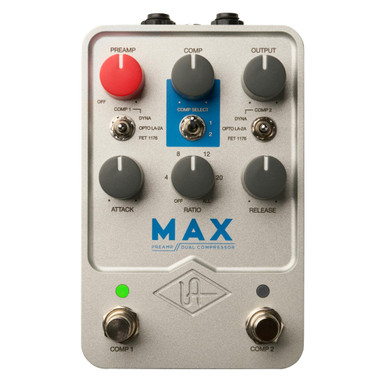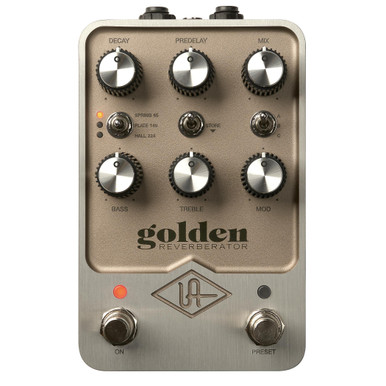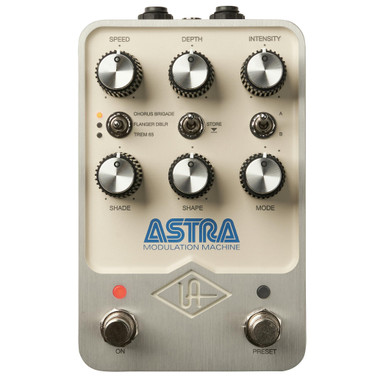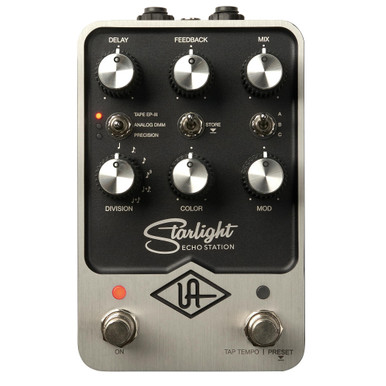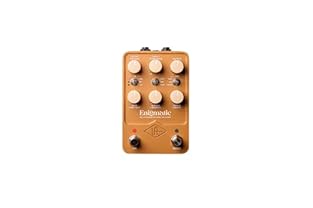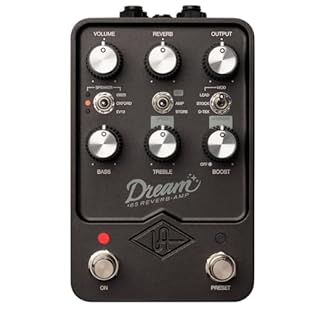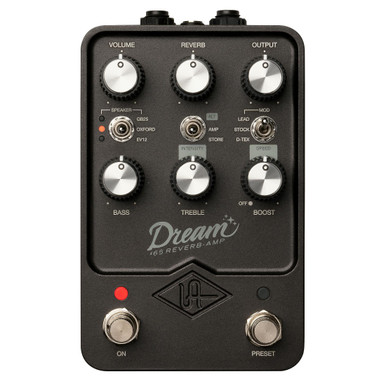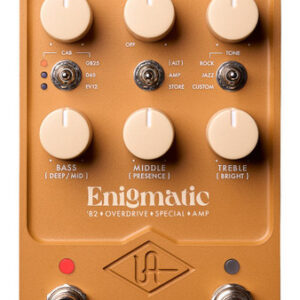Description
Universal Guitar Pedals are fresh in, this is a New one & the Just Pedals team think it is very tasty indeed!. Good news ! This can be delivered straight to your door, quickly and securely, anywhere in the UK & Europe. For more info on this New Guitar Pedals, please read on for full details, demos, videos, reviews and order online.
In 2021, music hardware/software experts Universal Audio launched their UAFX line of guitar effects pedals — bringing the same class-leading innovation and ease-of-use of its pro audio products to a tactile, plug-and-play stompbox format. The range has been expanded with the addition of the UAFX Max Preamp & Dual Compressor, which puts the colourful sound of three legendary limiters and an iconic tube preamp right at your feet!
3 Iconic Compressors, All In One Pedal!
From the mind of Universal Audio founder Bill Putnam to your pedalboard, Max gives you the same iconic UA 1176 FET compressor used on decades of legendary studio guitar sounds — whether you’re looking to make your funk a little funkier, add soulful sustain, or inject subtle infusions of tone!
The Max also offers the revered Teletronix LA-2A optical tube limiter that gives you softer, warmer dynamics control versus the 1176. Plus, you can fine-tune your compression with a pedal-exclusive Ratio feature — for limiting beyond the vintage hardware and UAD plug-in versions. Last but not least, add the grimy squeeze of the classic Dyna “red” comp for lo-fi compression and funky overdrive — perfect for sleazy slide tones!
Legendary UA 610 Tube Preamp & Compressor Stacking
Get the warm detail and character of UA’s iconic tube preamp and EQ, and dial-in killer sounds with the perfect amount of harmonics and grit. With Max, you can easily layer compressors in any combination too for a dizzying array of sounds and textures, letting you push your tones to the front no matter how much limiting you apply.
UAFX 2.0 Update: MIDI Control, Better Bluetooth, Expanded Presets & More
Using the rear panel USB-to-MIDI connection*, UAFX pedals fit right into your programmable MIDI rig — receiving preset changes, BPM clock sync and more! Here’s everything you get out of the free update:
- USB MIDI control: Bring your live shows to life with USB MIDI support providing 128 recallable presets, MIDI BPM clock sync and real-time expression.
- Wired USB app control: Control your pedals via the UAFX app over a wired USB connection (iOS or Android), offering another robust option for managing settings.
- Improved Bluetooth connectivity: Ground-up redesign of UAFX app control over Bluetooth, for improved reliability.
- Footswitch options: Switch between more presets on UAFX Amp Pedals using powerful new performance modes like Live, Tour (A/Bypass-B/Bypass) and A/B-C/D.
*Requires a compatible USB MIDI host, controller, or interface. Control of multiple UAFX pedals will require an additional USB hub. Click here to learn more.
Key Features
- The most authentic emulations of classic UA 1176, Teletronix LA-2A, and classic Dyna Comp compressors — all in a single pedal.
- Full emulation of UA’s legendary 610 tube preamp and EQ.
- Stack and layer any combination of compressors.
- Tweak preamp EQ settings, get serial/parallel operation, configure footswitches, add a sidechain bass filter, and more with the UAFX Control app.
- Silent switching, buffered bypass, stereo operation.
Specifications
- Power Requirements: Isolated 9V DC, centre-negative, 400 mA minimum (PSU sold separately)
- Inputs: 2 x ¼” TS
- Outputs: 2 x ¼” TS
- USB Type-C for updates via computer
- Height: 2.56″ (6.5 cm)
- Width: 3.62″ (9.2 cm)
- Depth: 5.55″ (14.1 cm)
- Weight: 1.24 lbs (0.567 kg)
